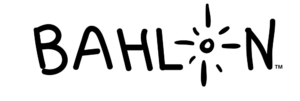Table of Contents
ToggleIntroduction
Social mobility, a phrase often heard but not always fully understood, refers to the movement or opportunities for movement between different social classes within a society. It is the proverbial ‘climbing’ of the social ladder. This article will delve into the complexities and intricacies of social mobility, examining how factors such as education, family background, and economic conditions can affect an individual’s trajectory. We will also look at the broader implications of social mobility, including its impact on societal inequality and the overall health of an economy. Whether you are a student of sociology, an eager learner, or simply curious about the dynamics of society, this exploration of social mobility promises to be enlightening.

Social Mobility
Social Mobility can be defined as the ability of an individual or family to move up or down the social and economic ladder within a society. It is an essential metric for understanding the level of equality and opportunity within a society.
Importance
The importance of mobility lies in its reflection of societal fairness. It serves as a mirror to the level of equality in opportunities provided to individuals, regardless of their socio-economic background. High social mobility suggests that individuals are free to shape their life outcomes, indicating a society where success is not dictated by one’s circumstances at birth but rather by one’s abilities and efforts. In contrast, low social mobility suggests a society where socio-economic status is largely inherited and less influenced by individual effort, thus indicating a high level of inherent societal inequality.
Types of Social Mobility
There are two main types of mobility: intergenerational and intragenerational.
Intergenerational Social Mobility
Intergenerational social mobility refers to the change in social status that occurs from one generation to the next within the same family. For instance, a first-generation college student whose parents did not have a college education would be an example of upward intergenerational mobility. Conversely, a decline in status, such as a wealthy family losing its fortune and becoming poor, is an instance of downward intergenerational mobility.
Intragenerational Social Mobility
Intragenerational social mobility, on the other hand, describes the social status movement within an individual’s lifetime. For example, a person who starts in a low-wage job and progressively moves up to a six-figure salary is experiencing upward intragenerational mobility. Conversely, a person who experiences job loss or bankruptcy and moves from a high to a lower social class within their lifetime is experiencing downward intragenerational mobility.
Factors Influencing Social Mobility
Numerous factors play a role in influencing social mobility. Three of the most significant are education, economic opportunities, and social networks.
Education
Education is a critical component of social mobility. A strong educational foundation not only equips individuals with the skills necessary for economic success but also opens doors to higher-paying jobs that may otherwise be inaccessible. Studies have consistently shown a correlation between higher levels of education and greater upward social mobility. It can be a pathway out of poverty and a tool for closing the wealth gap.
Economic Opportunities
The job market significantly impacts mobility. When the economy is strong and job growth is robust, there are more opportunities for individuals to secure employment that can lead to upward mobility. However, during economic downturns, these opportunities become less available. Thus, individuals from lower socio-economic backgrounds may find it more difficult to climb the social ladder.
Social Networks
Social networks, or individuals’ connections, can also influence social mobility. These networks can provide information about job opportunities, generate business partnerships, or lead to other kinds of beneficial relationships. Individuals with extensive, diverse social networks are often able to leverage these connections to advance economically and socially, thereby enhancing their chances of upward mobility. Conversely, those with limited networks may find mobility more challenging.
Historical Perspectives
Delving into the historical perspectives of social mobility helps us understand how societal changes have influenced mobility across generations. It provides a broader context for the existence of current social structures and offers insights into how we might improve mobility in future generations.
Social Mobility Across Generations
Throughout history, the level of mobility has varied significantly across generations. During periods of economic prosperity and societal openness, social mobility has often increased, allowing individuals from lower socioeconomic backgrounds to rise through the ranks. Conversely, during times of war, economic depression, or societal upheaval, social mobility has often stagnated or even declined.
Societal Changes and Their Impact
Societal changes, such as advancements in technology, changes in political climate, or shifts in cultural values, have profound impacts on social mobility. For instance, the advent of the Industrial Revolution in the 18th and 19th centuries led to significant societal changes, including urbanization and the creation of new job opportunities, which in turn increased mobility. Additionally, the civil rights movements throughout the 20th century broke down many barriers, enabling historically marginalized groups to experience greater mobility.
Breaking Down Barriers
Efforts to improve social mobility must necessarily involve a concerted effort to dismantle the barriers that hinder upward progress for individuals from lower socio-economic backgrounds. These barriers often exist in the realms of education, economic policy, and social support systems.
Overcoming Educational Barriers
Improving access to quality education is paramount for enhancing mobility. Providing early childhood education programs, ensuring equitable funding for public schools, and offering affordable higher education options can all play significant roles in helping individuals overcome educational barriers. Additionally, vocational training programs can provide an alternative pathway to economic success for those who may not wish to or cannot, pursue traditional academic routes.

Economic Policies for Social Equality
Economic policies can significantly influence mobility. Progressive taxation, living wage policies, and robust social safety nets can help to reduce income inequality and provide a more level playing field for individuals of all socio-economic backgrounds. Moreover, policies encouraging job creation, particularly in industries with the potential for high wage growth, can also facilitate upward mobility.
Strengthening Social Support Systems
Strengthening social support systems is another critical aspect of promoting mobility. This could be achieved through policies that increase access to affordable housing, provide healthcare coverage for all, and ensure adequate benefits for the unemployed and the elderly. Additionally, mentorship programs and community initiatives can foster a supportive environment that enables individuals to achieve their potential, regardless of their starting point in life.
FAQs
What is social mobility?
Social Mobility refers to the ability of an individual or family to move up or down the social and economic ladder within a society.
What factors influence social mobility?
Several factors influence mobility, but three key ones are education, economic opportunities, and social networks. Higher levels of education often lead to better job opportunities, while a robust economy can provide more opportunities for upward mobility. Social networks can also be leveraged to gain economic and social advancements.
How has social mobility changed throughout history?
Social Mobility has fluctuated throughout history, often in correlation with societal changes like economic prosperity, technological advancements, and political shifts. For instance, the Industrial Revolution and civil rights movements led to increased mobility.
Conclusion
Social mobility is a multi-faceted phenomenon influenced by a myriad of factors ranging from education and economic opportunities to social networks. Its dynamics have been shaped and reshaped throughout history by various societal changes, including economic fluctuations, technological advancements, and shifts in the socio-political landscape. To enhance social mobility and allow more individuals to climb the social ladder, it is paramount to address the barriers hindering upward progress. This involves improving access to quality education, implementing economic policies that promote social equality, and strengthening social support systems.




















